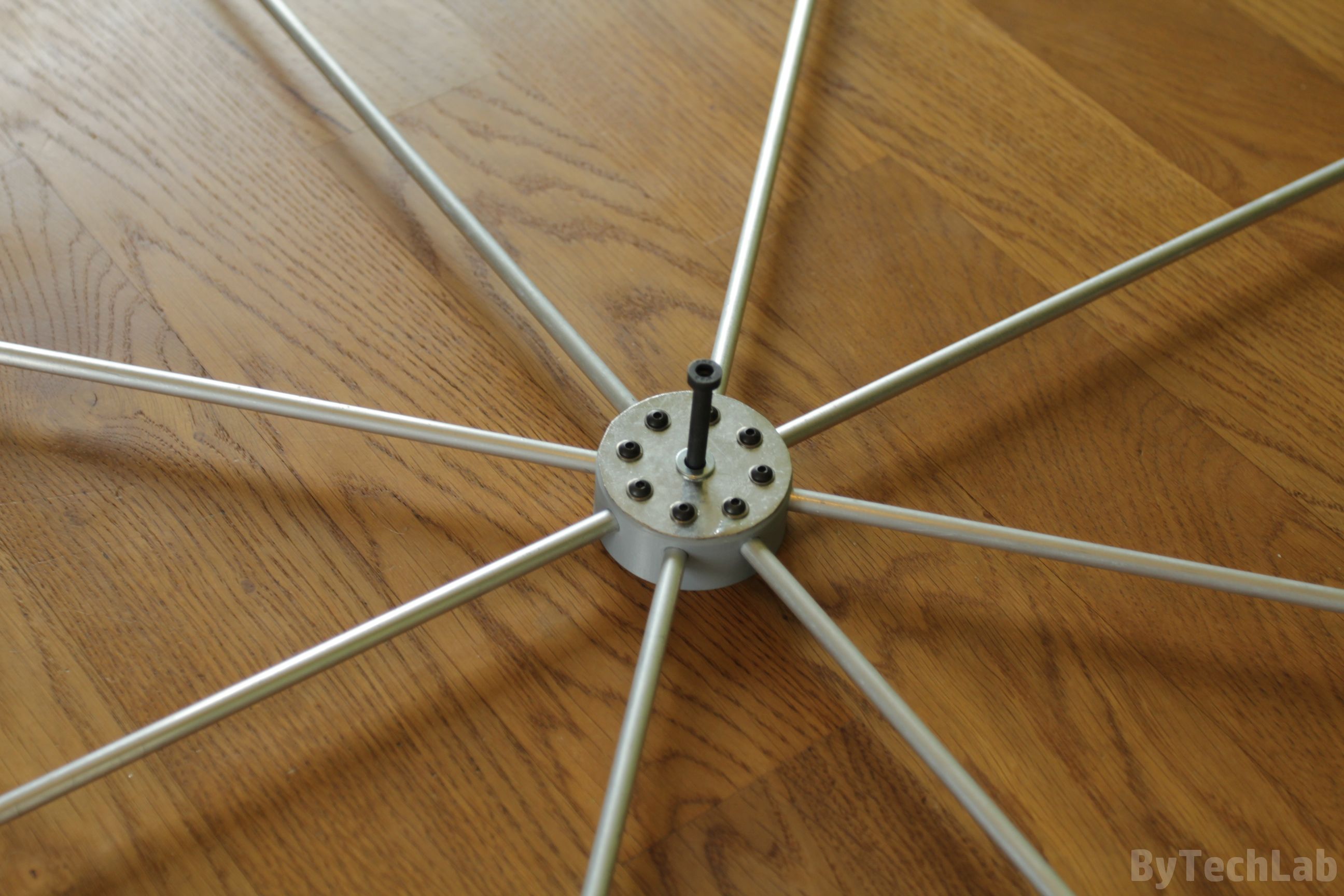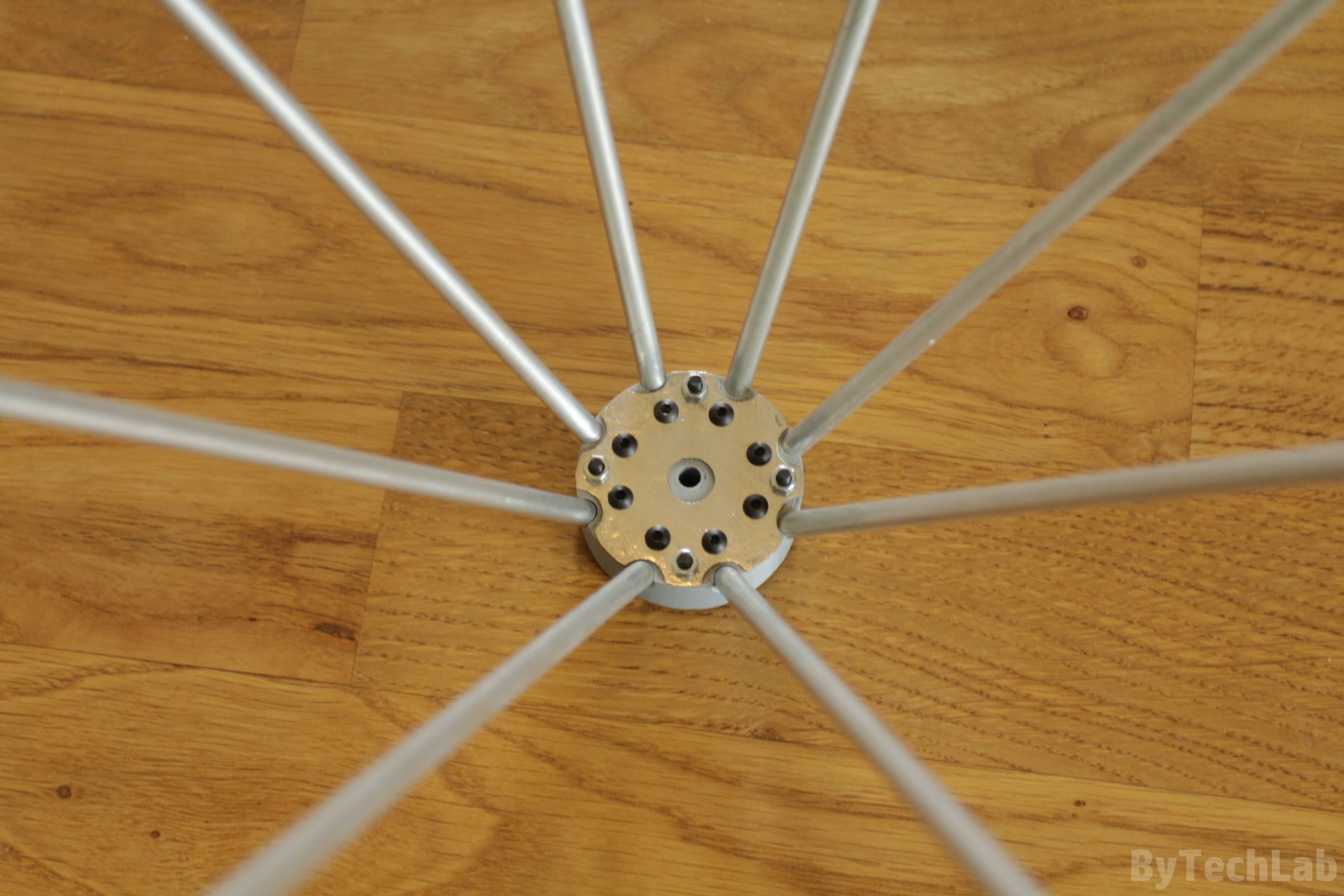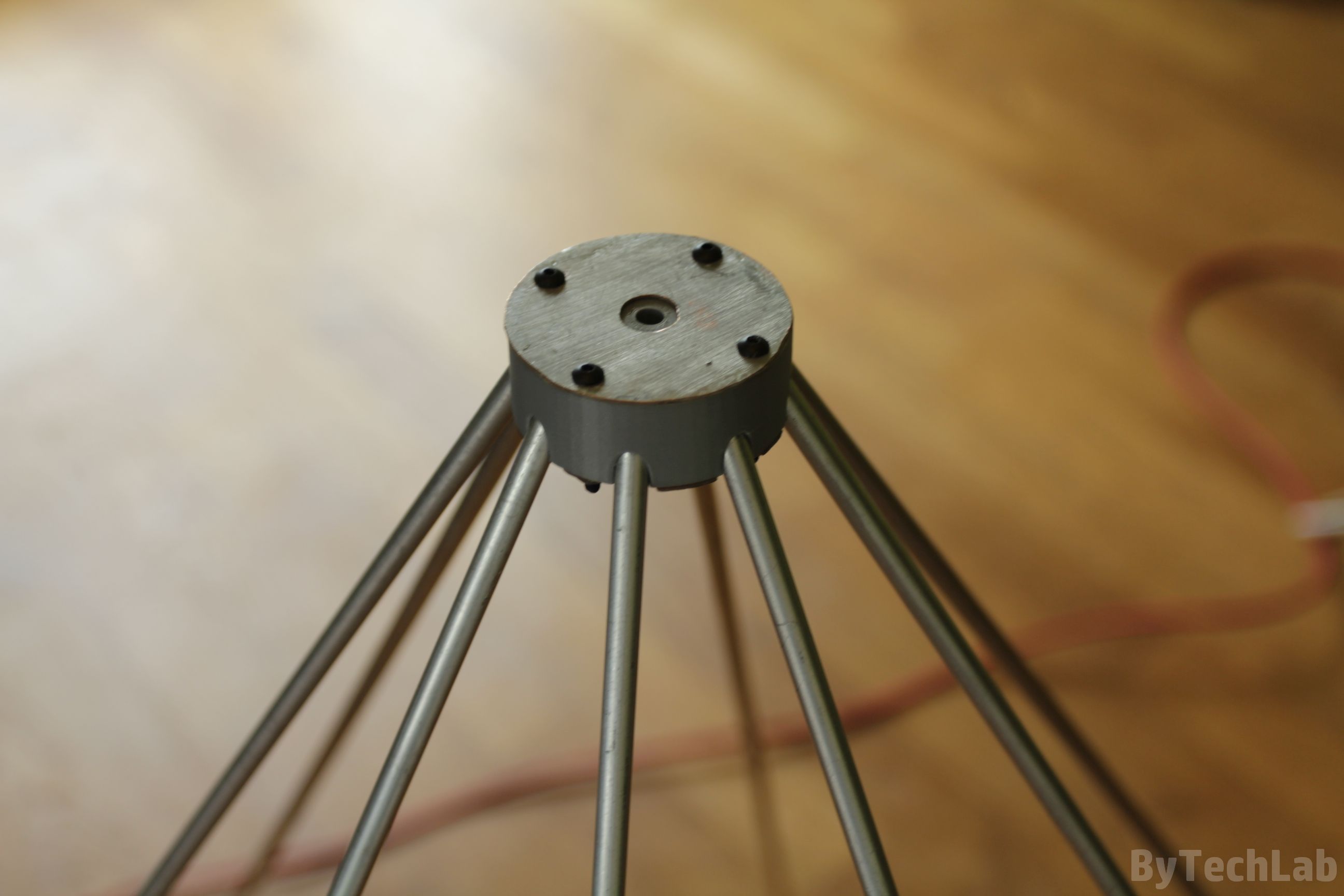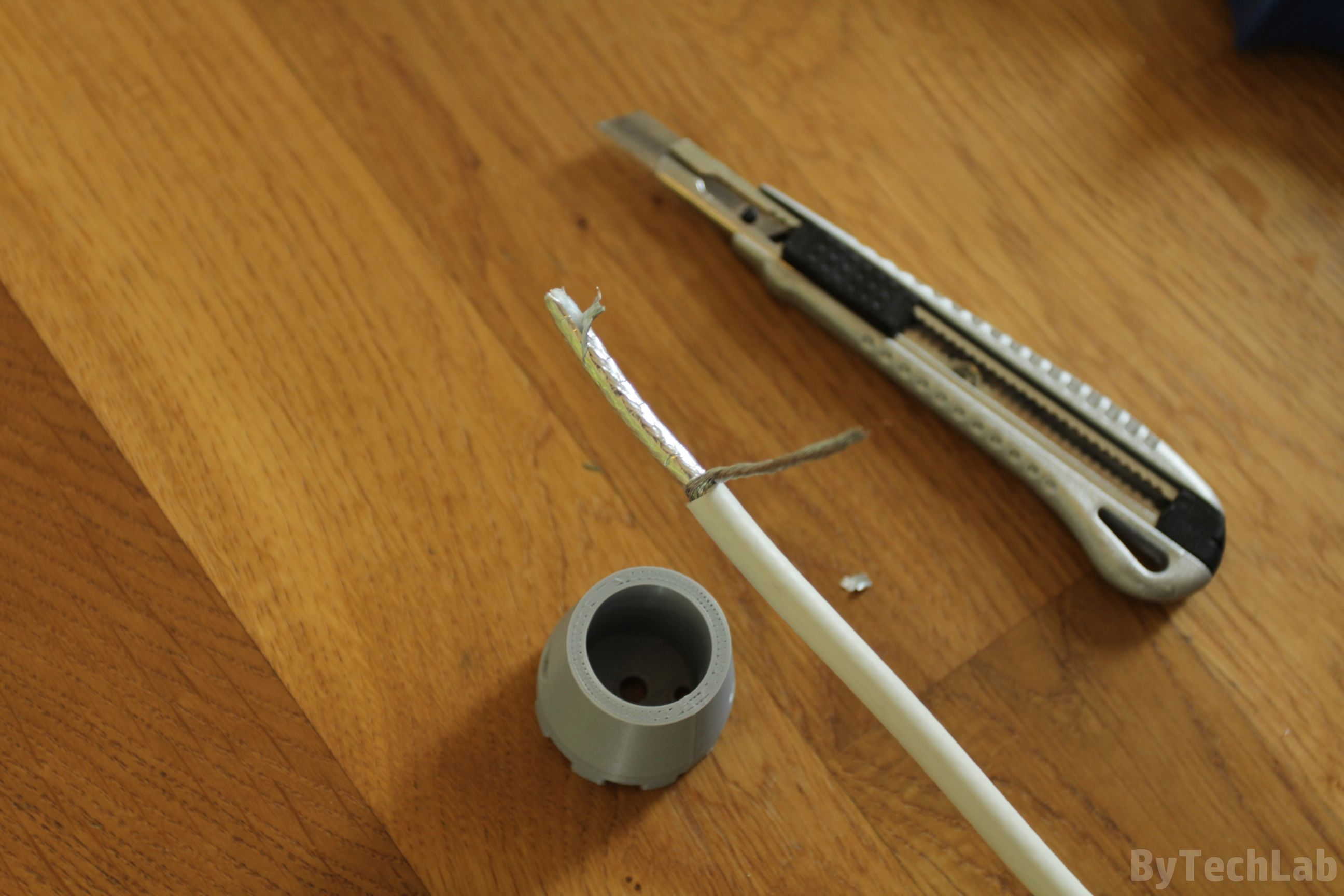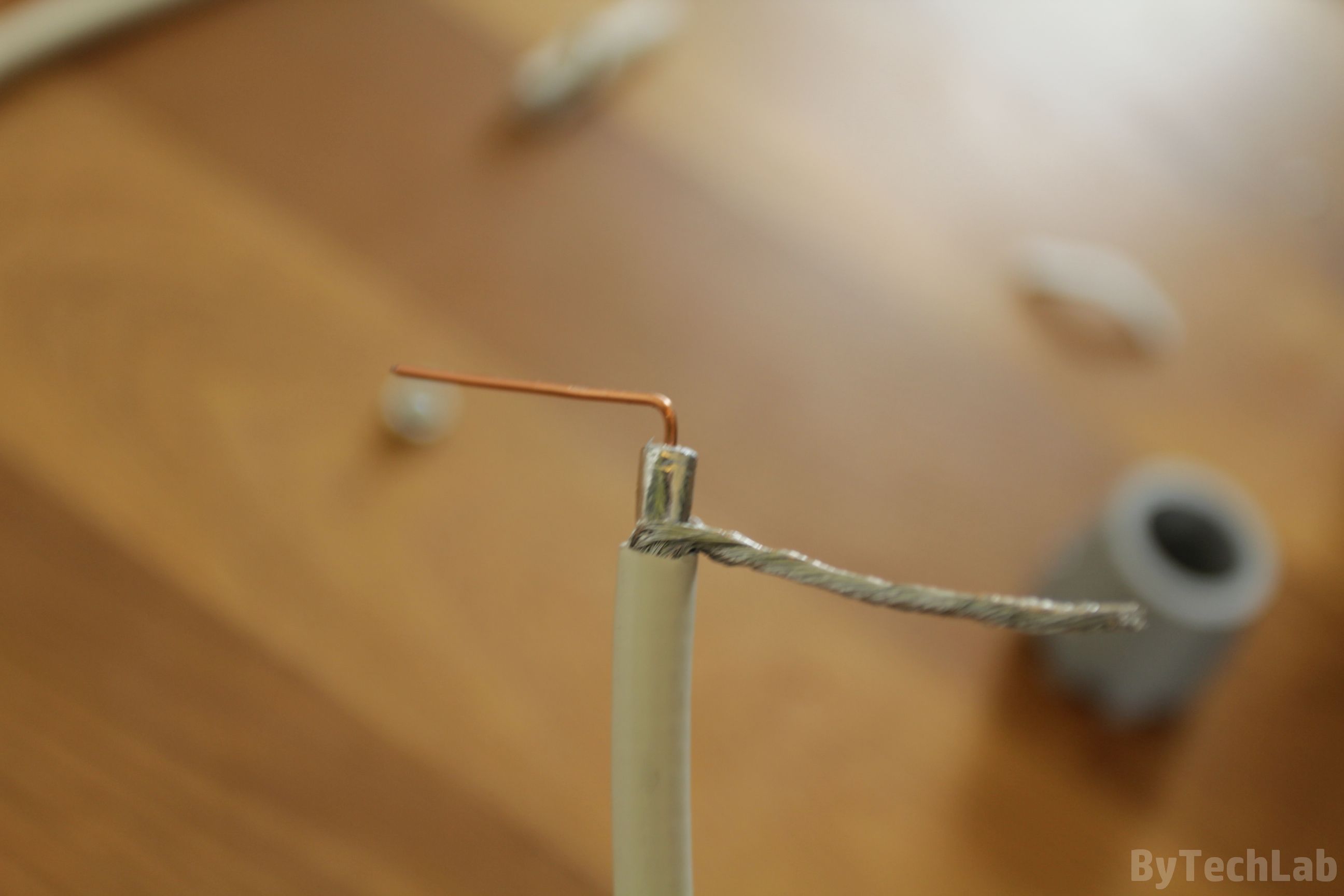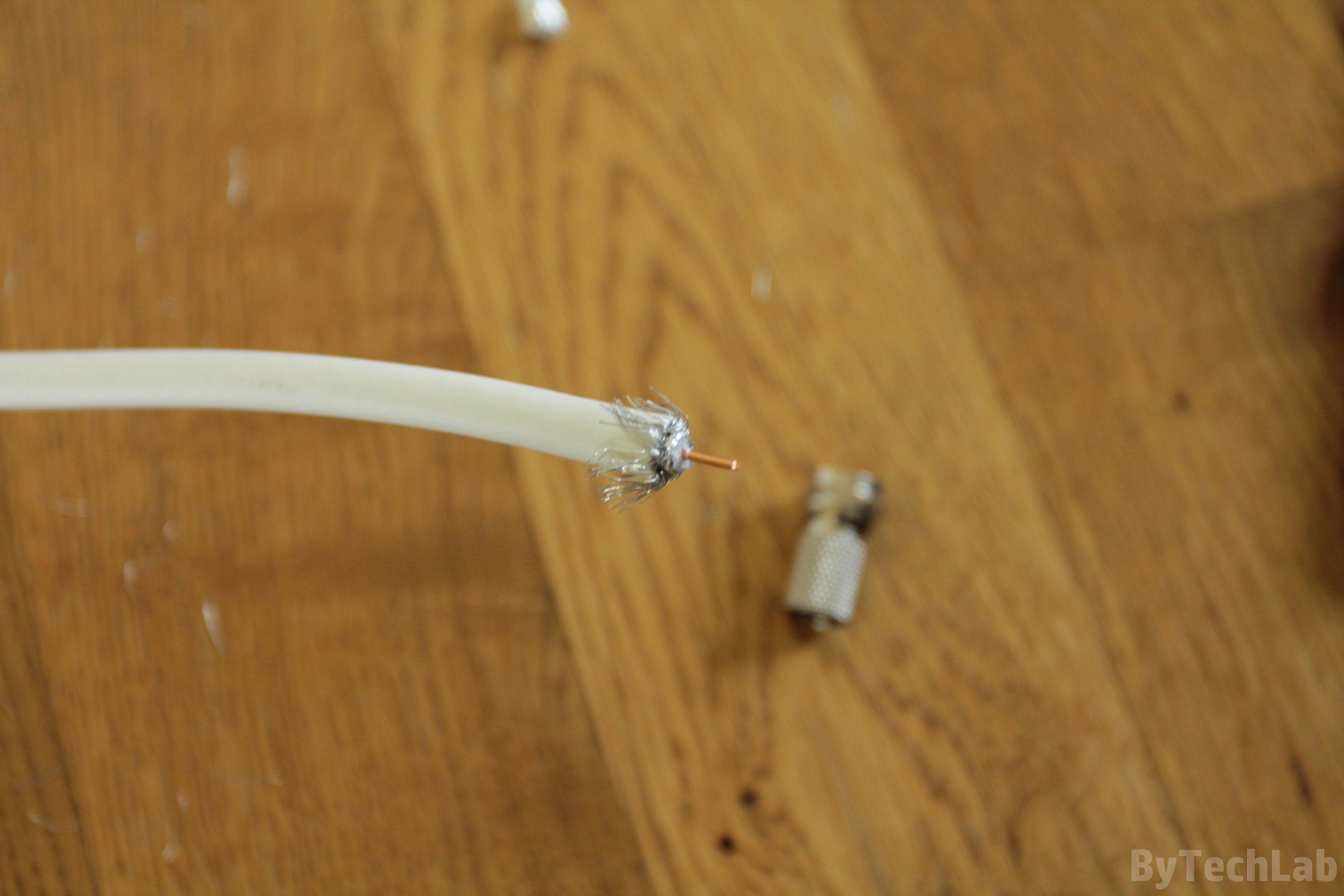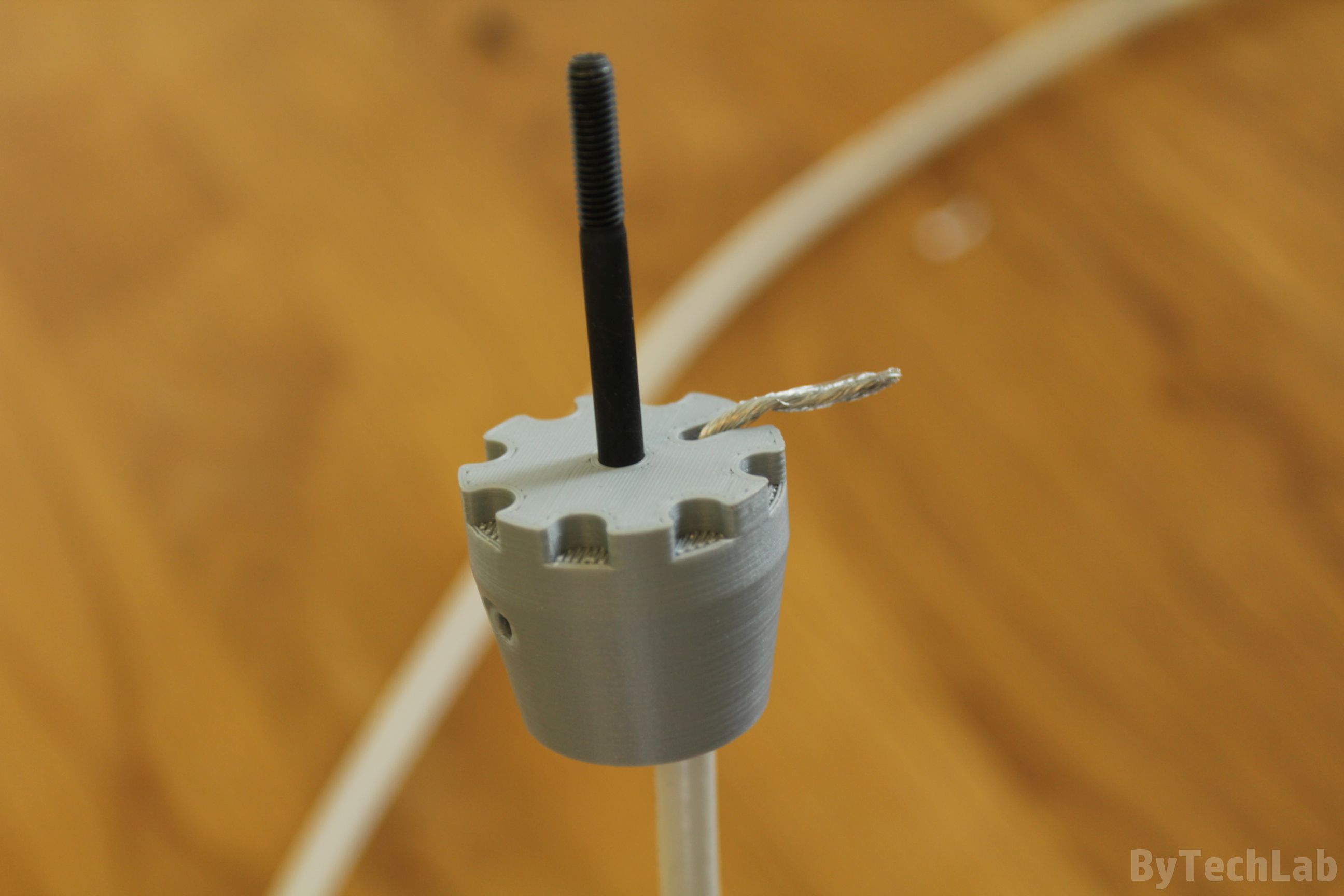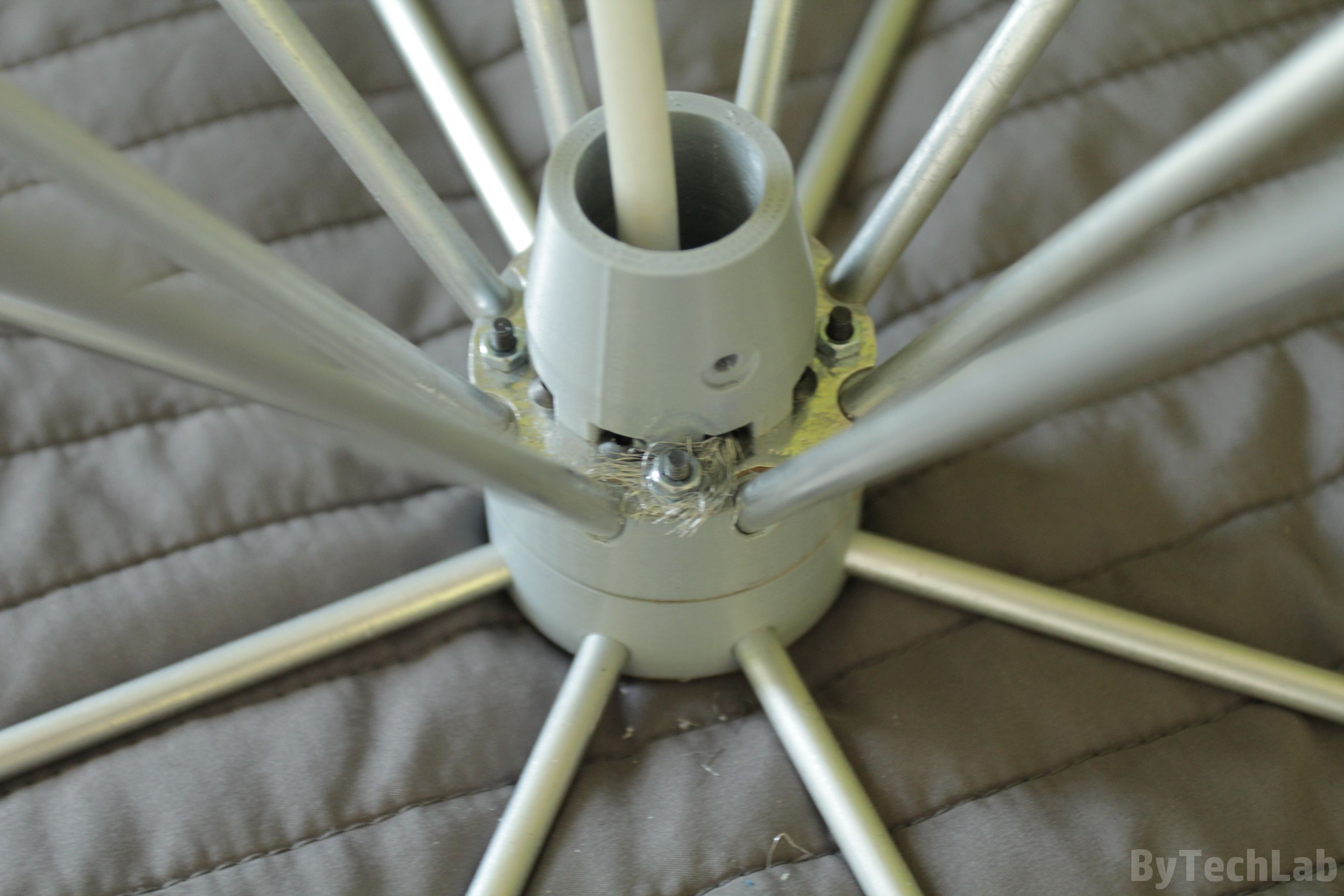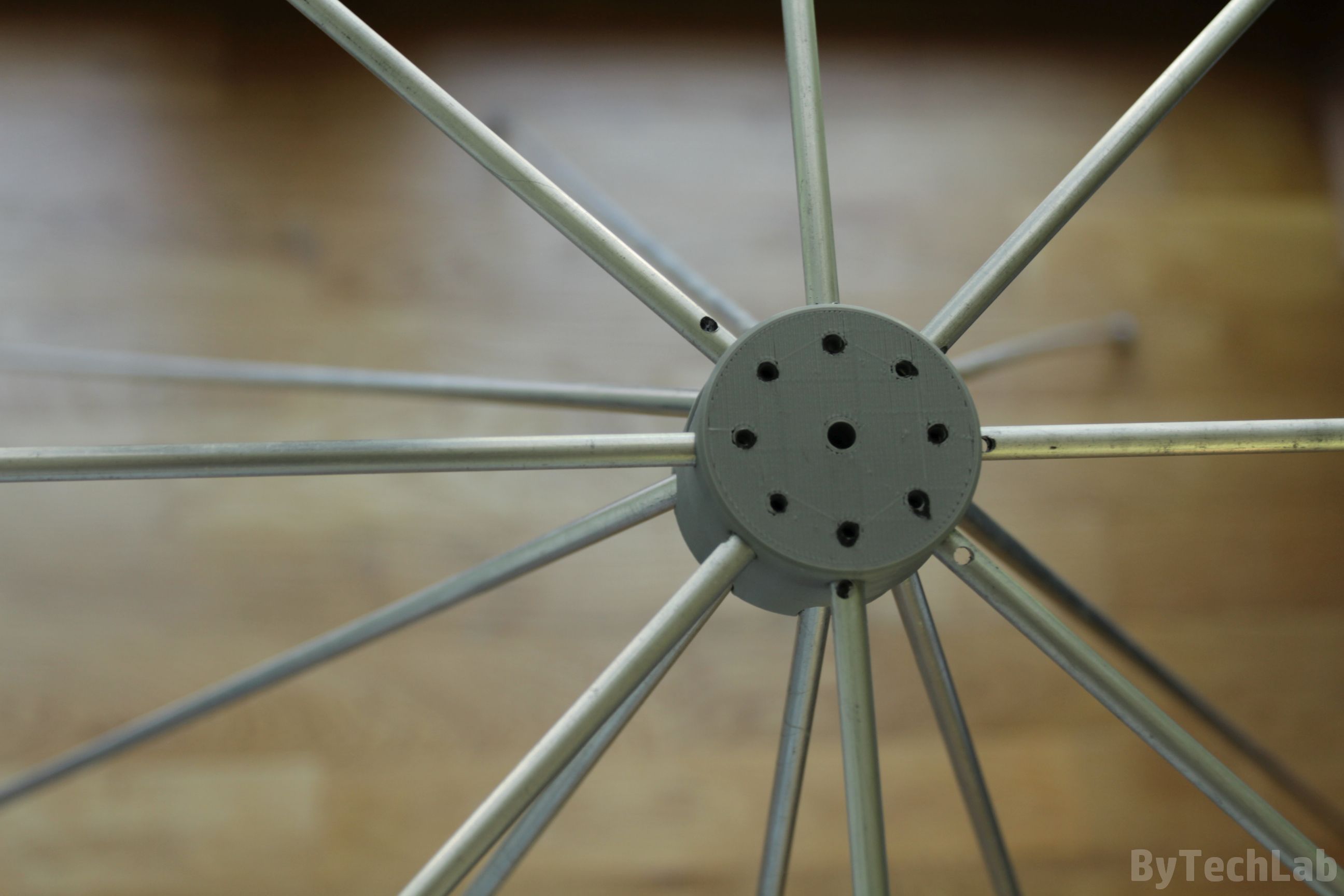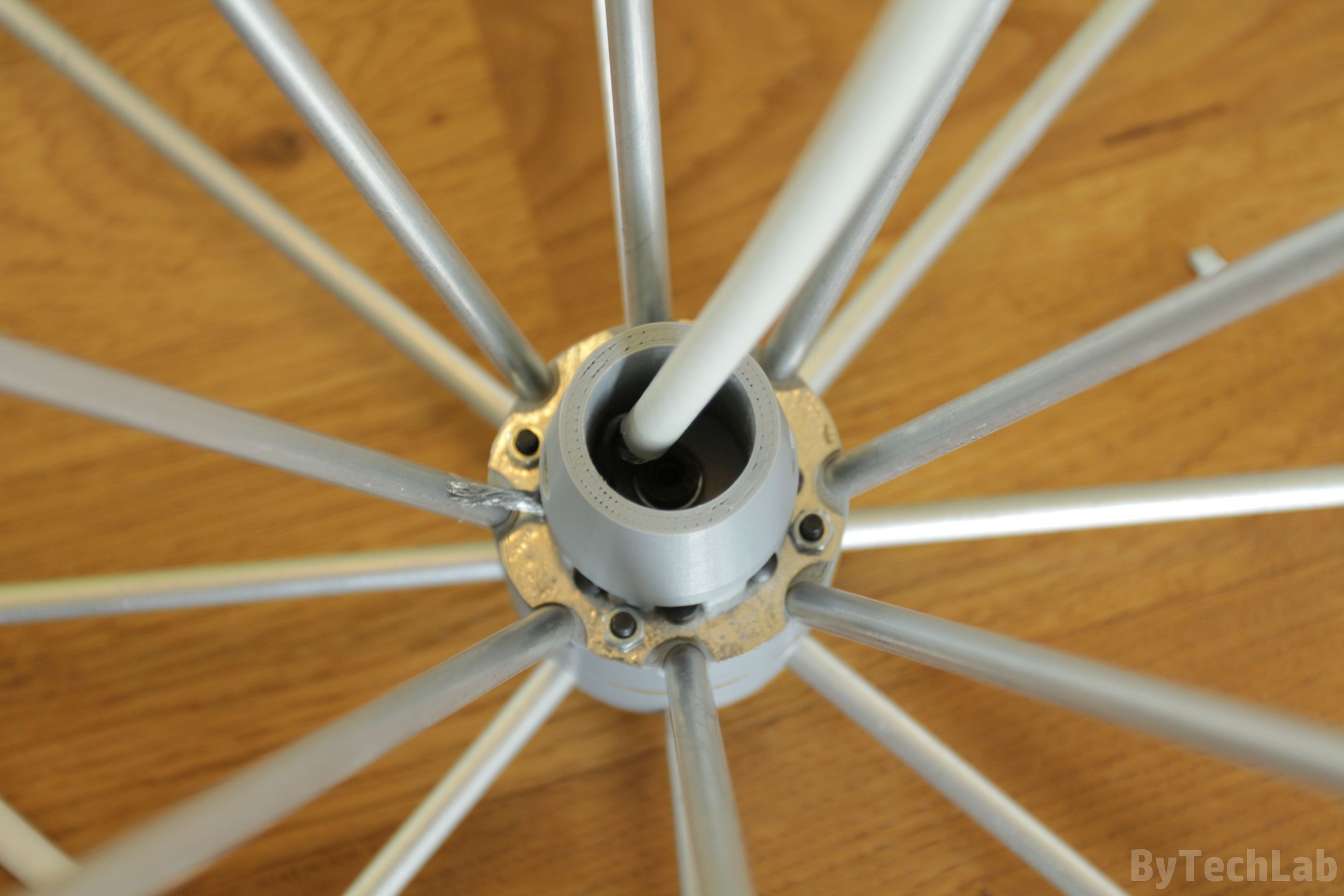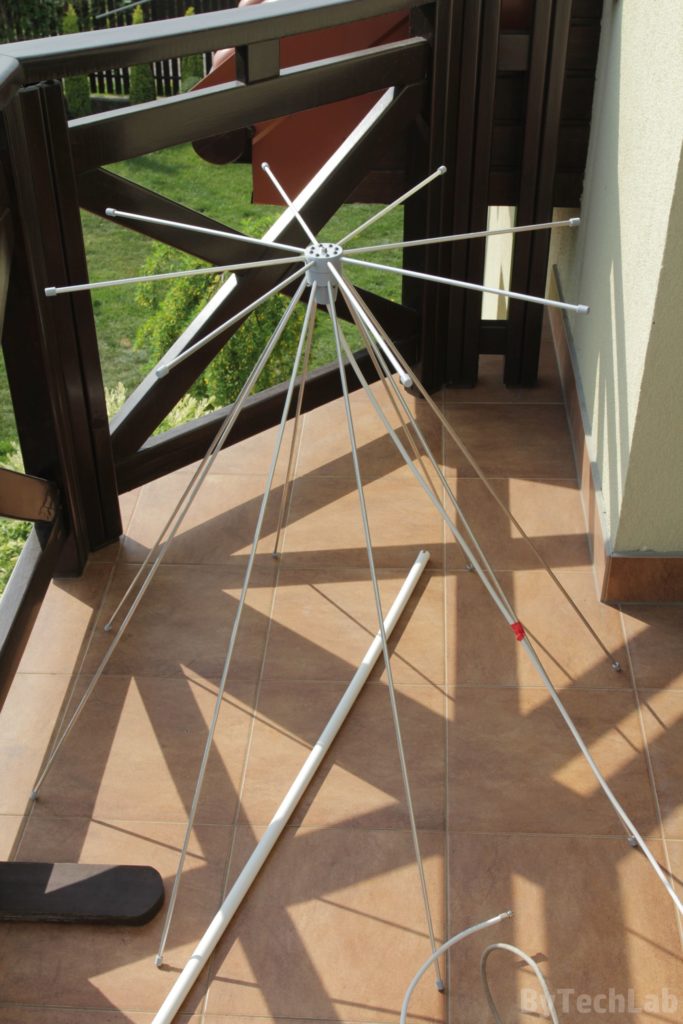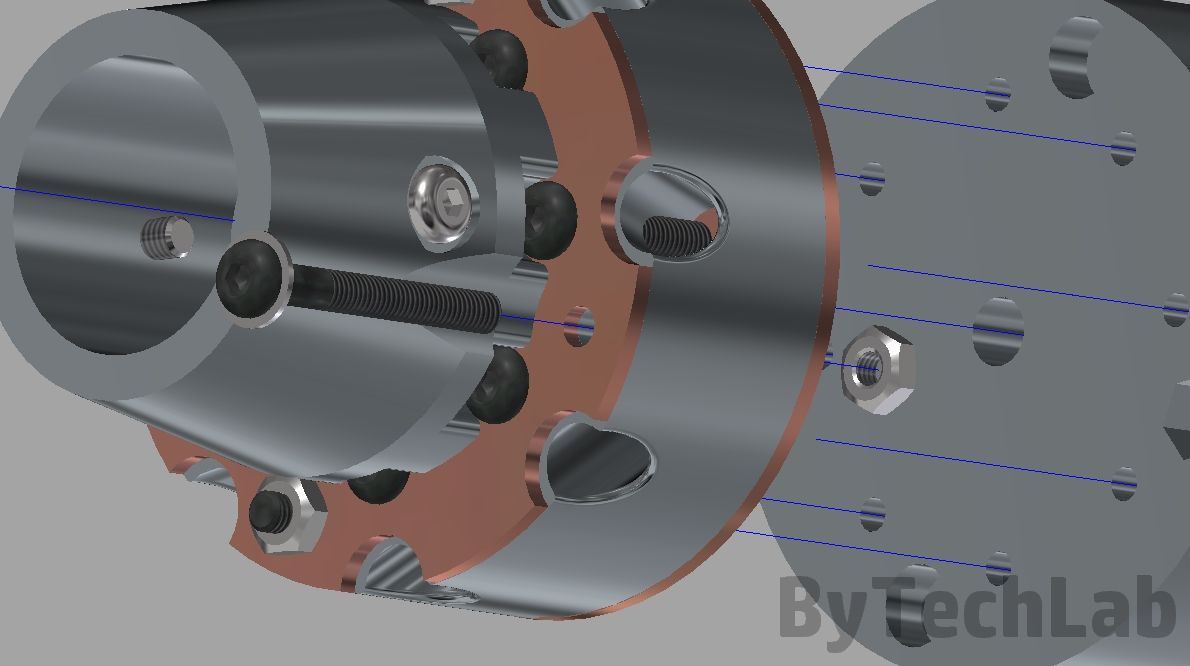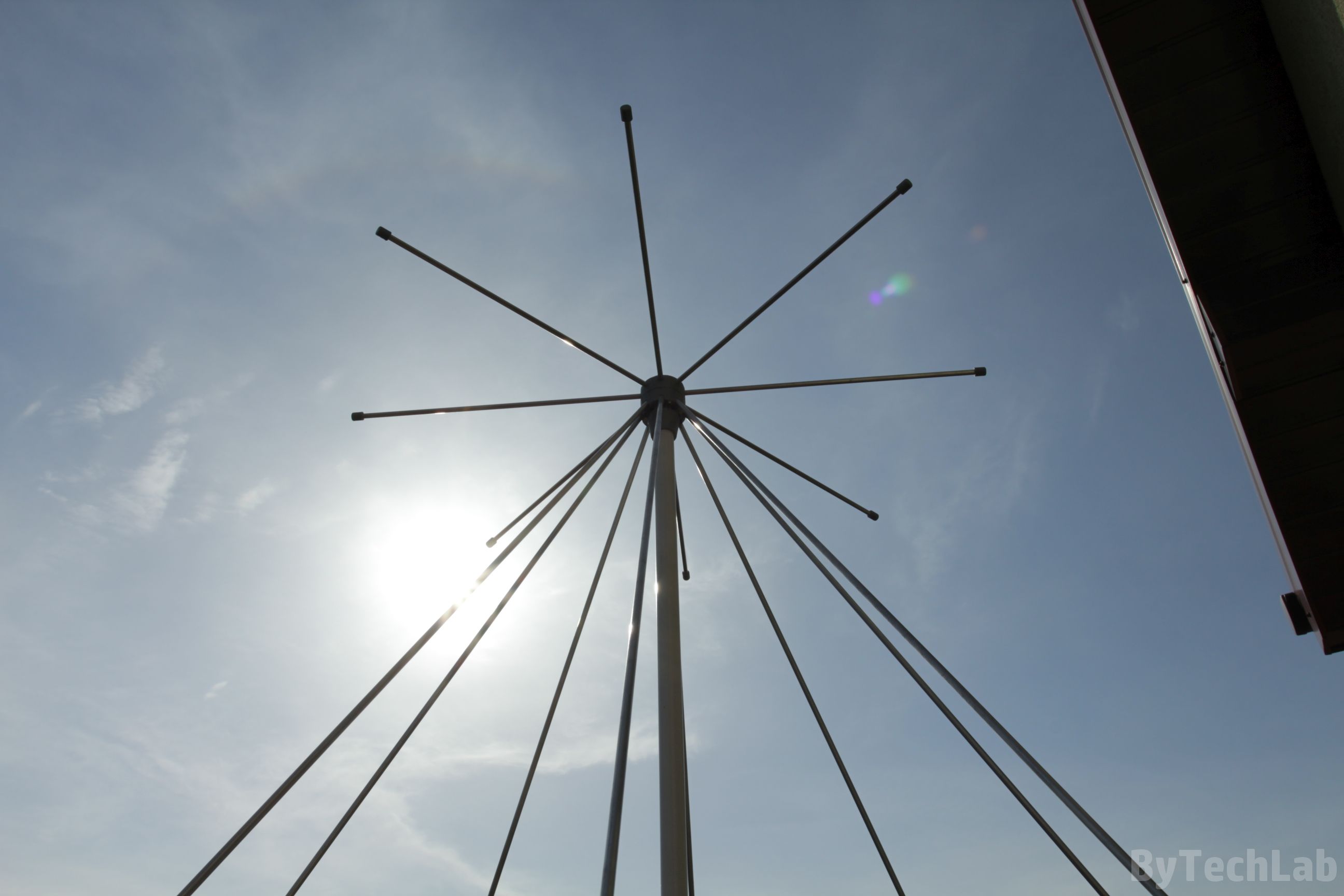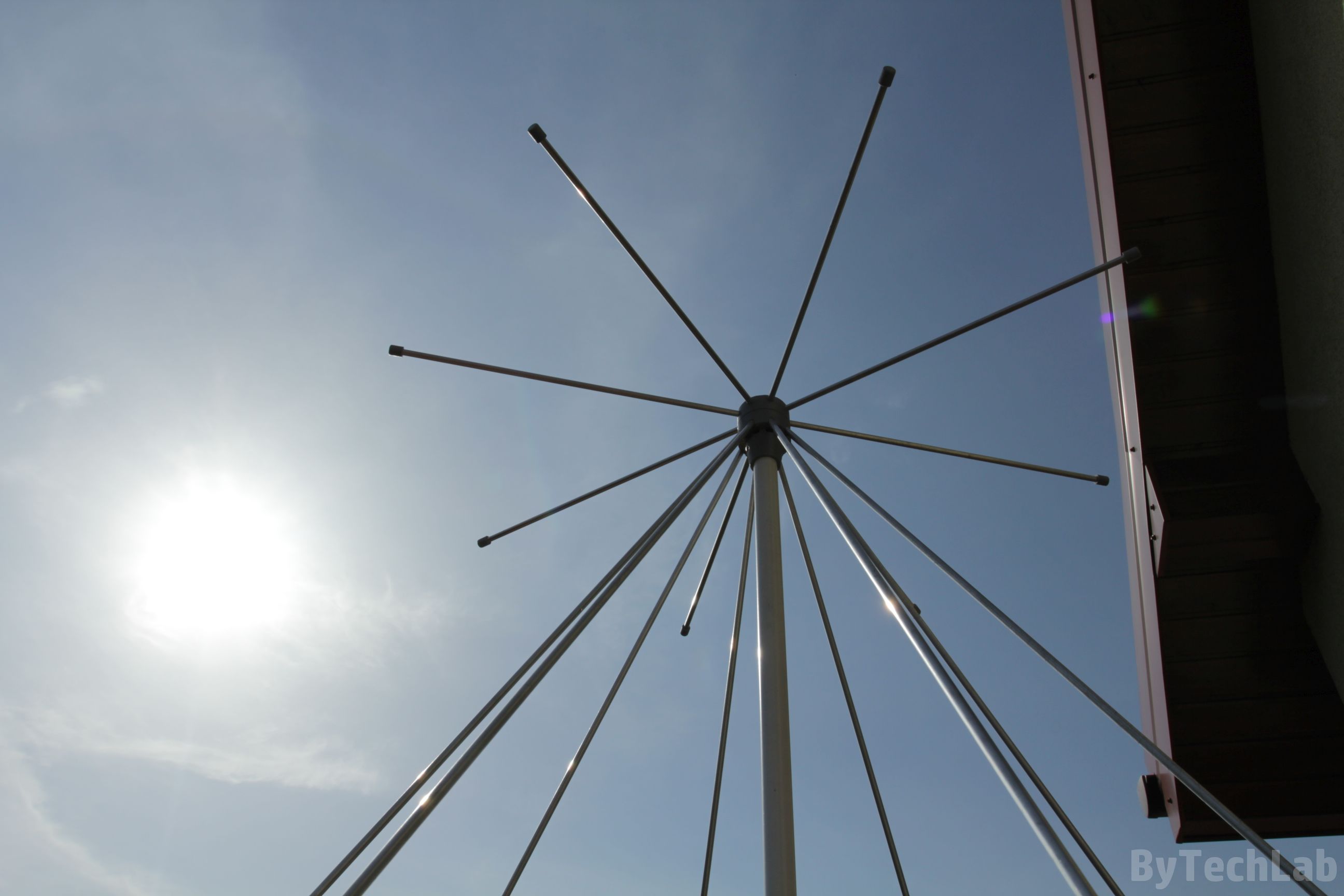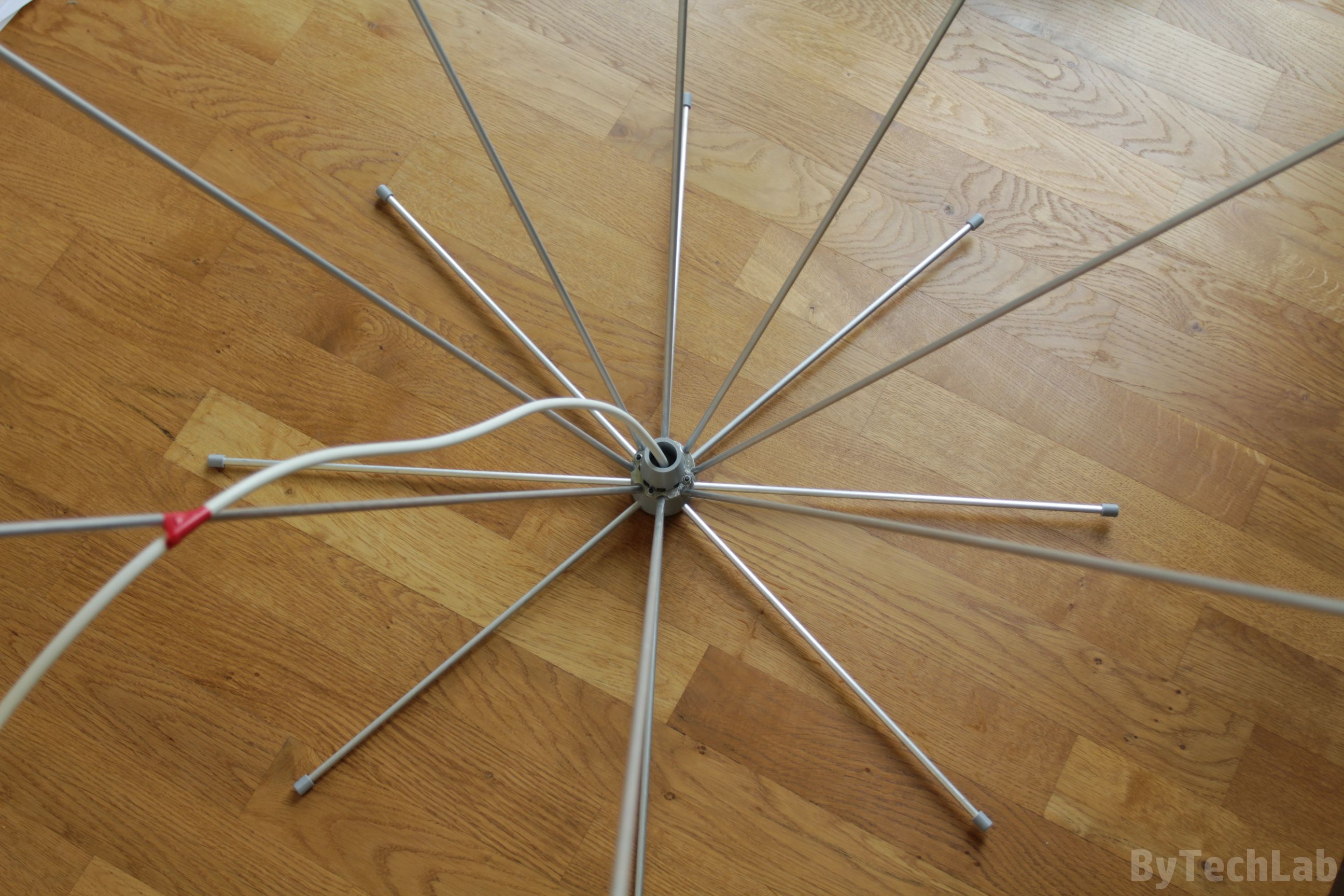For a long time I wanted to listen in to some unencrypted radio frequencies (for ex. air band). When I discovered the RTL-SDR dongle I’ve bought it almost instantly. For such a low price, it has incredible possibilities.You can listen to signals that you are receiving ,decode them and observe their spectrum in range of about 500 kHz to 1.75 GHz.
Unfortunately, as you can guess, the RTL-SDR without a good antenna can’t do much. I was looking for an antenna that would be relatively easy to build, lightweight and broadband (so that I don’t have to change the antennas every time I want to listen in to different frequencies).
The antenna was designed in the way so that it can be built with use of 3D printer and some other tools that you probably already have. Unfortunately, as it turned out later, the antenna was not as easy to build as I thought it will be (there were a few problems that are already corrected in the final version of this project).
I am very happy with this antenna – it works exactly as expected. It receives signals quite well in the range of about 85 Mhz to about 850 Mhz. I don’t know the exact characteristics of this antenna (gain vs. frequency) because I don’t have any equipment that would allow me to check it.
NOTE: This antenna was not simulated with use of 3D EM solvers (I’m sure that many things could have been done better).
Below I will describe the entire process of building such an antenna so that you can make one by yourself.
Design & some renders:
As always, the entire project was created in the Autodesk Inventor software. The design of the whole antenna took me about 2-3 hours. In addition, I have also designed some tools that will help in assembling this antenna (for ex. drill guides). This antenna has been designed for a minimum frequency of 85 MHz (if you want to change it to 100 MHz you can easily calculate new rods lengths over here (the rest stays the same): https://www.changpuak.ch/electronics/calc_11.php).
If you want to modify this project or check several dimensions, the CAD files can be found under the link which is placed at the bottom of this page.
Below you can see several other renders:
Needed parts/tools:
- Some M3 Bolts and washers
- One M5 x 55 mm bolt (x50 mm should be fine too if you don’t use washers)
- About 11 m [(345 mm * 8)+(980 mm*8)] of 6 mm dia. aluminium rod (with 2.5 mm hole inside)
- Drill
- M3 Tap
- 3D printer
- Non etched PCB laminate / Copper plate (1.5 mm thick or less)
- 50 Ohm coax cable
- F-type RF connectors
- PVC pipe 1/2″ (about 21,5 mm outer diameter in my case)
- ASA filament (or anything else that can survive in external conditions)
3D Printing parts:
Everything has been printed from ASA filament (similar to ABS, however it is more resistant to weather conditions). Remember to set high infill percentage because these parts will carry heavy loads, especially during a storm. All of the parts were printed in about 6-7 hours in my case.
I didn’t have an idea for the name of these 3D printed parts, so I named them in the following way:
- Upper part that holds the disc aluminium rods – ” disc mount part”
- Bottom part that holds the cone aluminium rods – ” cone mount part”
Recommended printing settings:
- Layer height: 0.15 mm
- Heated bed: 90 deg C or more
- Printing speed: 40-60 mm/s
- Filament: ABS/ASA
- Infill: 80% or more
- Outlines: 2 or more
- Top/Bottom 100% layers: 3 or more
- Support: Yes – Only for drill guides
- Nozzle diameter: 0.4 mm
Putting it all together:
On the render above you can see how the whole thing is assembled. Below I will describe the entire process of assembling this antenna step by step:
1) Drilling holes to size:
First, you have to drill all the holes in the disc and cone mount parts to make sure that they have correct diameter according to the dimensions below:
Holes dimensions:
- Holes for aluminium rods : Ø6 mm
- Holes for M3 bolts which clamp down these rods : Ø2,5 mm (You don’t really need to drill these because you will tap them anyway )
- Center hole for main screw: Ø5 mm
- 4 holes for attaching separator and bottom copper plate/PCB to the cone mount part : Ø3 mm
- 2 holes in the mast mount part that are used to fix the PVC pipe : Ø3 mm
2) Tapping holes:
You will need to tap all of the holes in the disc and cone mount parts that are used to clamp down aluminium rods with an M3 tap. You also need to make sure that every thread is straight because it might cause problems with alignment later.
3) Cutting aluminium rods and drilling holes in them:
At first you need to cut these rods to the right length and then smooth their ends with a file.If you are building this antenna for minimum frequency of 85 MHz the rod lengths are:
- 345 mm (8 pieces) for disc
- 980 mm (8 pieces) for cone
Next, drill a hole in each of the rods that will be used to fix it in the disc/cone mount part . For this purpose, use previously printed drill guides. Drill guide consist from the 3D printed part and a piece of aluminium rod reamed to 3 mm inside.
Both parts should be connected together using hammer or a vise (tight fit). Then you need to insert the aluminium rod into the drill guide ,and lock the whole thing firmly it in the vise. After locking it, drill the holes with addition of some oil to lubricate the drill guide (to prevent wear of it).
Next, you will need to put on the 3D printed end caps. Below you can see how cone and disc aluminium rods should look like when they are finished:
4) Cutting and drilling copper plates / PCB,s:
The next step is to cut out the plates that will be used to connect electrically all of the rods together. They can be cut out from a copper sheet or PCB laminate (1.5 mm thick or less).
All dimensions can be found in CAD files. If you need some technical drawings please let me know in the comments . In addition, I have tinned all of the plates to ensure better contact with the bolts and improve resistance to the weather conditions.
5) Assembling the disc:
Assembly of the disc begins by checking if all the rods fit to their holes. All rods should fit very tightly (they can’t be loose because they could vibrate in windy conditions). Each rod is bolted down separately with an M3x12 mm bolt , be careful to don’t damage threads in 3D printed parts. Below you can see how the whole disc should look like after it is finished:
6) Assembling the cone:
Proceed as above (but this time use M3x16 mm bolts to secure the aluminium rods), however, additionally you need to bolt down the separation plate at the top of the cone mount part using three M3x25 mm bolts. Leave one hole empty (this hole will be used to clamp down the coax braided shield to the bottom plate) .You only need to press the M3 nut into the heaxagonal hole at the bottom of disc mount part.
7) Preparing coax cable:
- Remove first layer of insulation from the cable [about 30 mm or more]
- Twist the braided shield
- Remove most of inner insulation core [leave about 10 mm or less]
- Bend the core wire by 90 deg.
- Put on some heat shrink tubing to insulate the core from the braided shield
- Make a loop from copper core wire so that M5 bolt can fit in it
- Prepare the other end and install an F-type connector
8) Assembling the whole antenna:
Next you need to put the wire, M5 bolt and braided shield through the mast mount part and then tighten everything .Then you have to clamp down the braided shield to the bottom plate using an M3 screw and a washer (you have to use hole that you’ve previously left empty)
9) Checking for continuity:
After everything is finished you have to check if every aluminium rod is connected to coax cable with a multimeter. If any of these rods is not connected properly, you have to fix it.
10) Mounting in desired place:
After everything is finished you can mount your antenna in desired place:
How well it works?:
The number of signals that this antenna receives (in whole band for which it was designed) exceeded my expectations. The antenna receives several signals at once in the Air Band, because of that I am able to listen to the conversations of many pilots without any problems. I also receive a lot of strange signals in the Ham radio bands and anywhere else. Answering to the question above: it works very well 🙂 .
[Update] Corrections of minor issues:
I improved the design to make it easier to clamp down the braided shield to the bottom copper plate. Now the nut is on the other side , because of this you can easily squeeze the braid with a screw and washer.
Final effect:
Links to .STL & CAD files and a short summary:
If you want to make this antenna by yourself you can find all CAD and STL files over these links:
- Grabcad: https://grabcad.com/library/mostly-3d-printed-discone-antenna-1
- Thingiverse: https://www.thingiverse.com/thing:2909028
UPDATE: You can read about this project also on:
- Hackaday: https://hackaday.com/2018/05/29/this-mostly-3d-printed-discone-antenna-is-ready-for-broadband-duty/
- rtl-sdr.com: https://www.rtl-sdr.com/a-discone-antenna-made-from-3d-printed-parts-and-aluminum-rods/

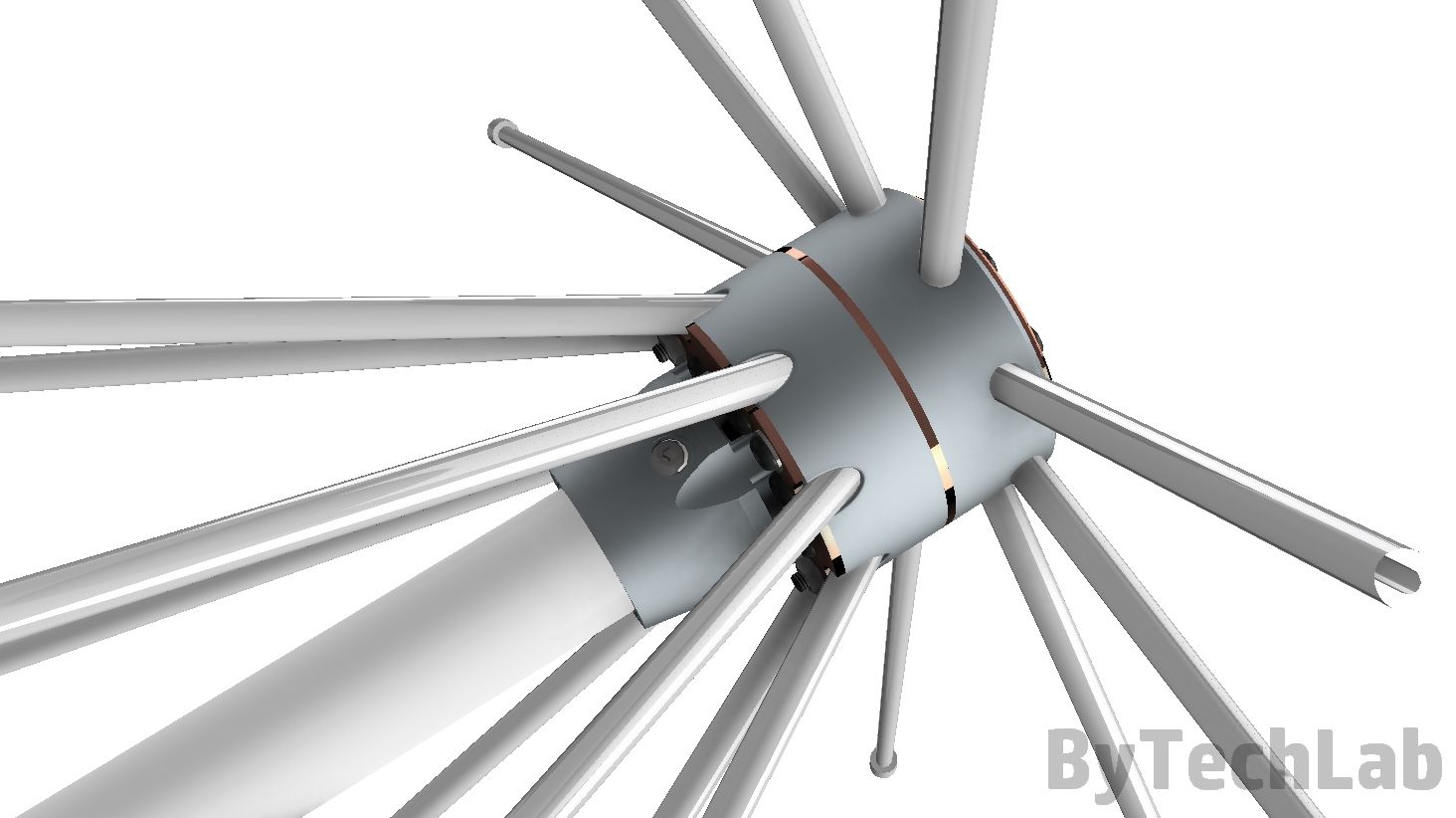
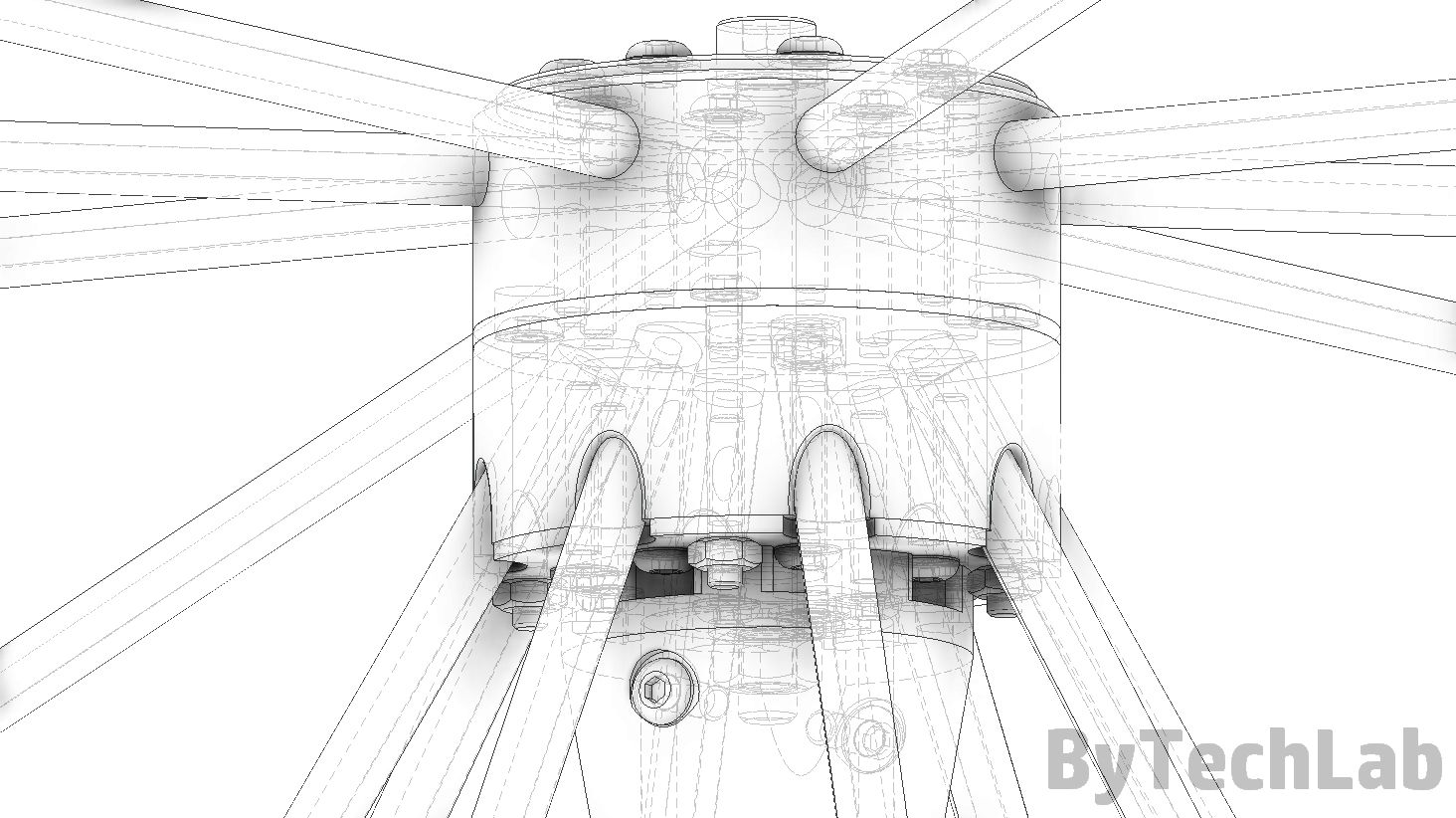

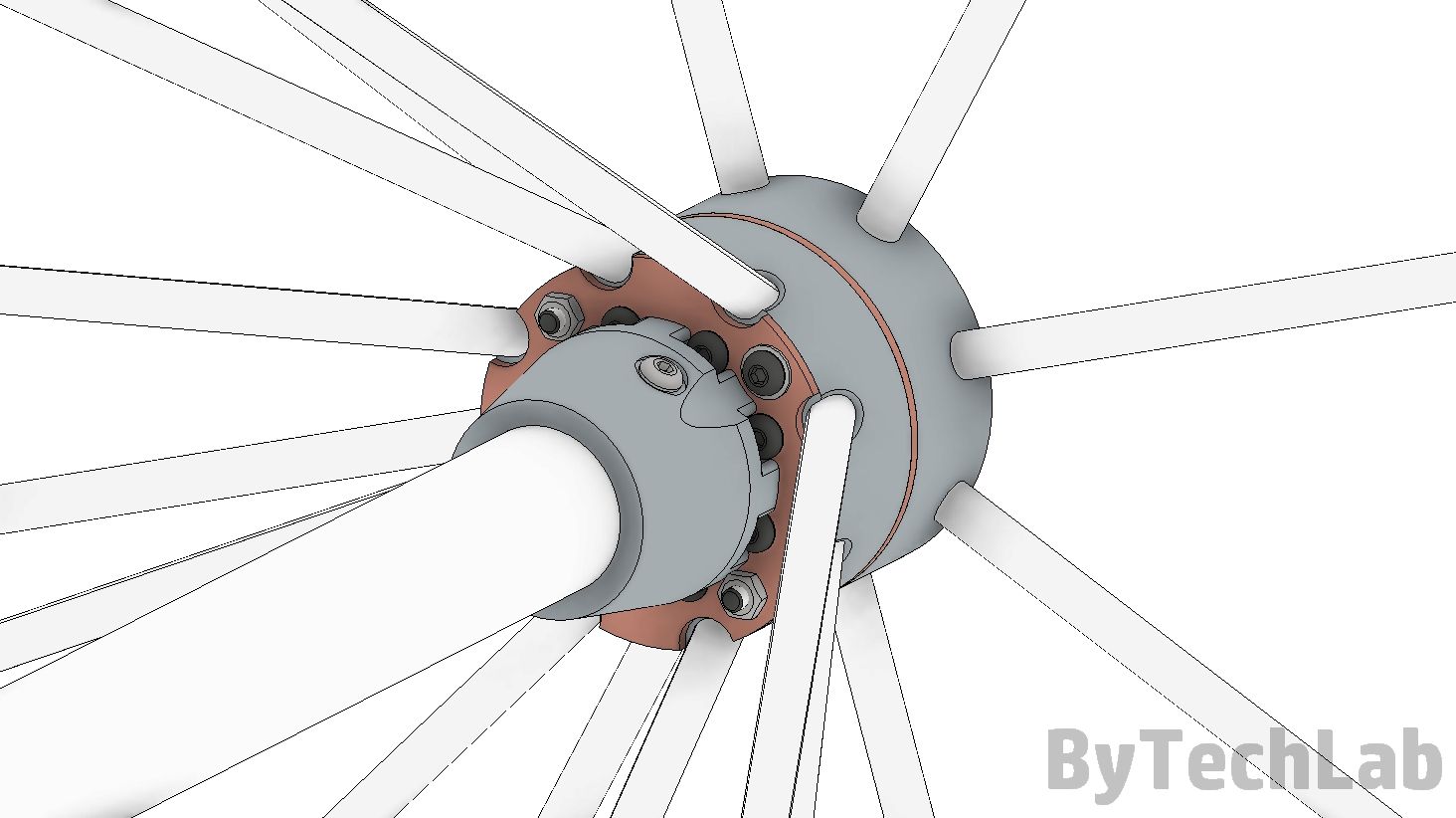


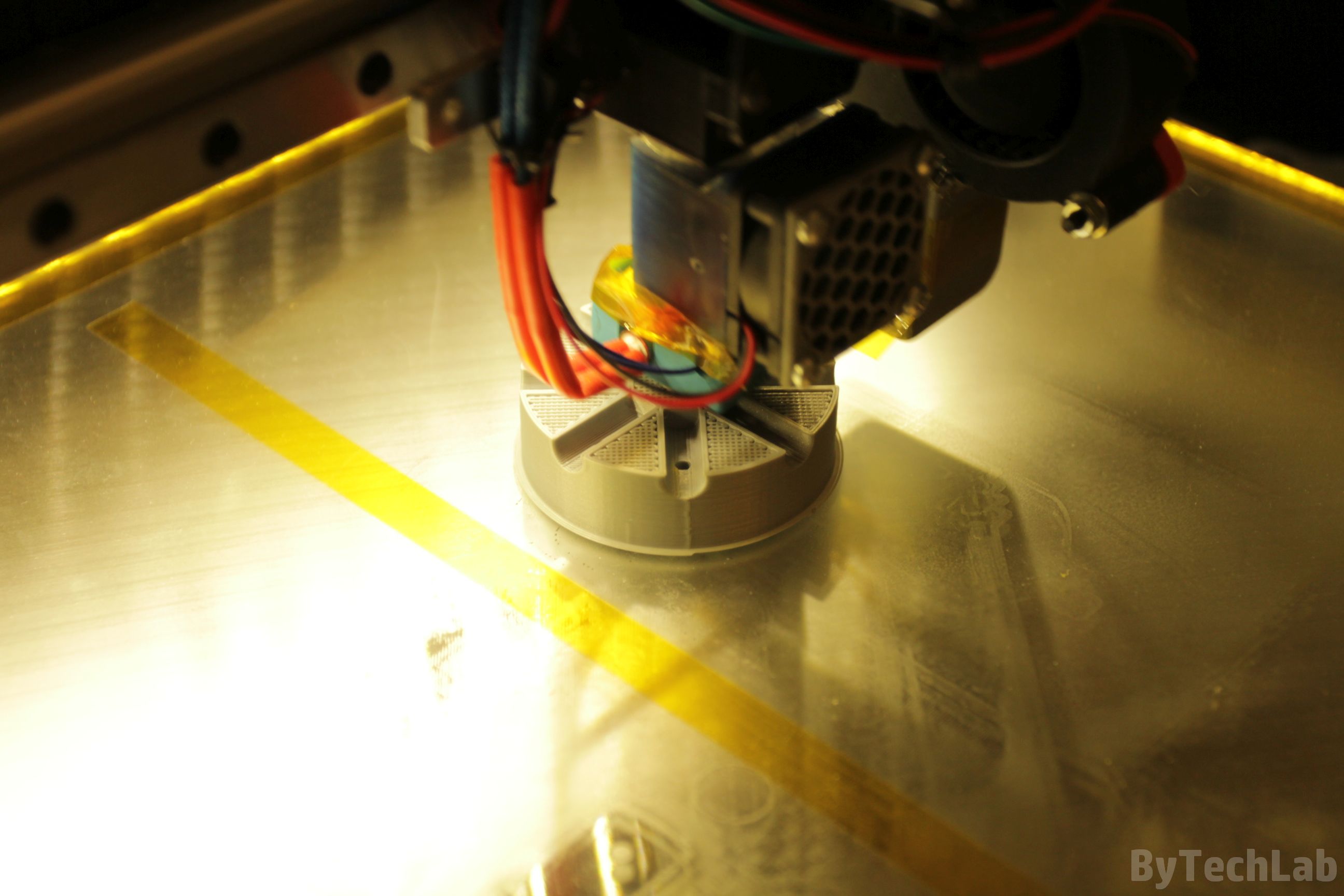
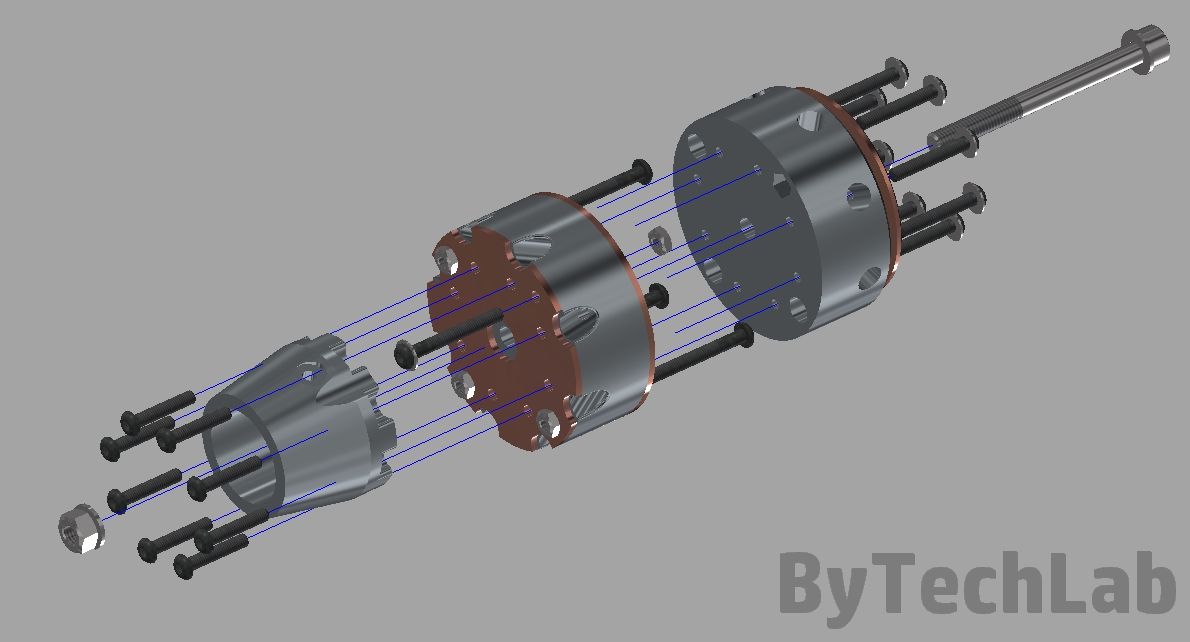
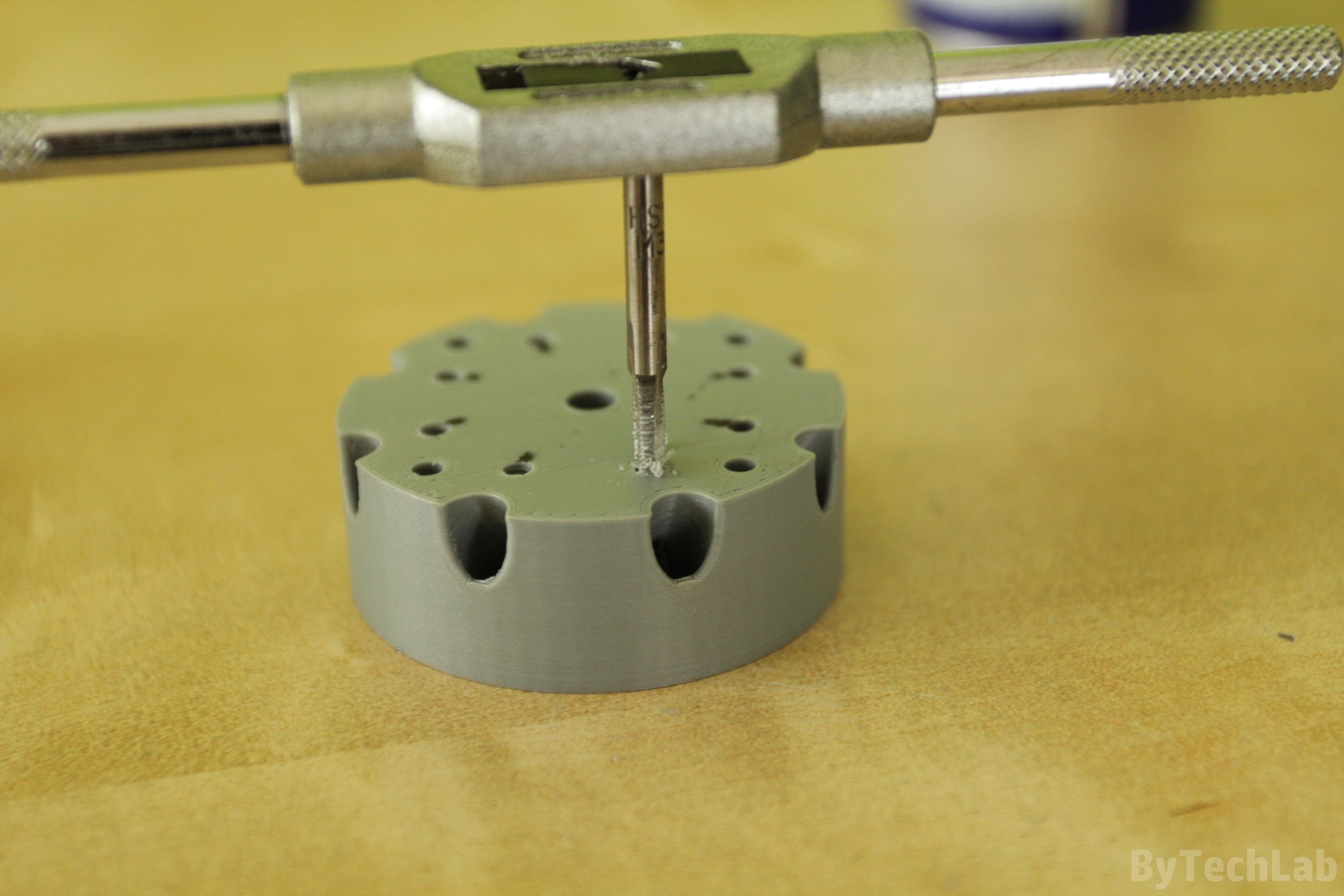
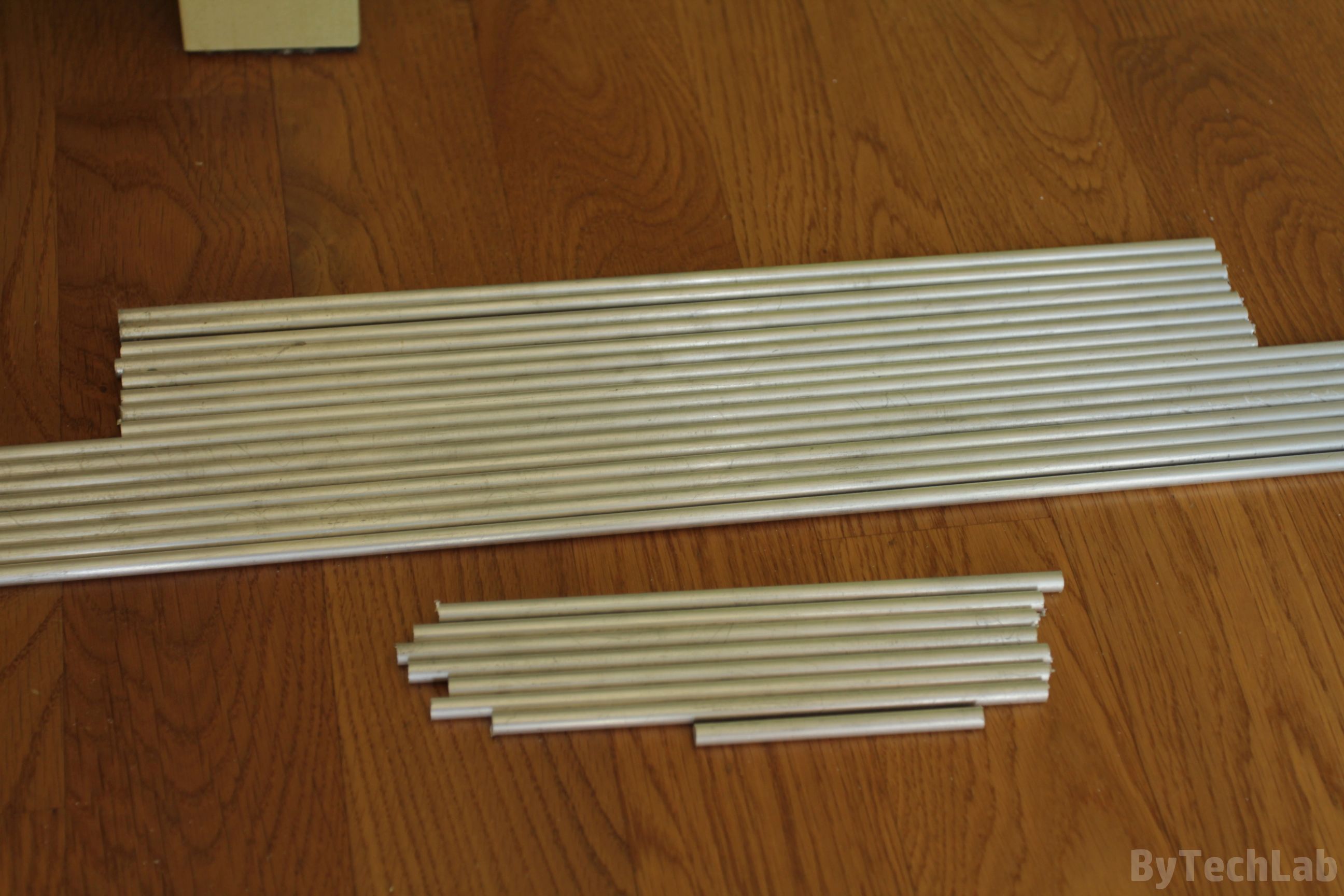
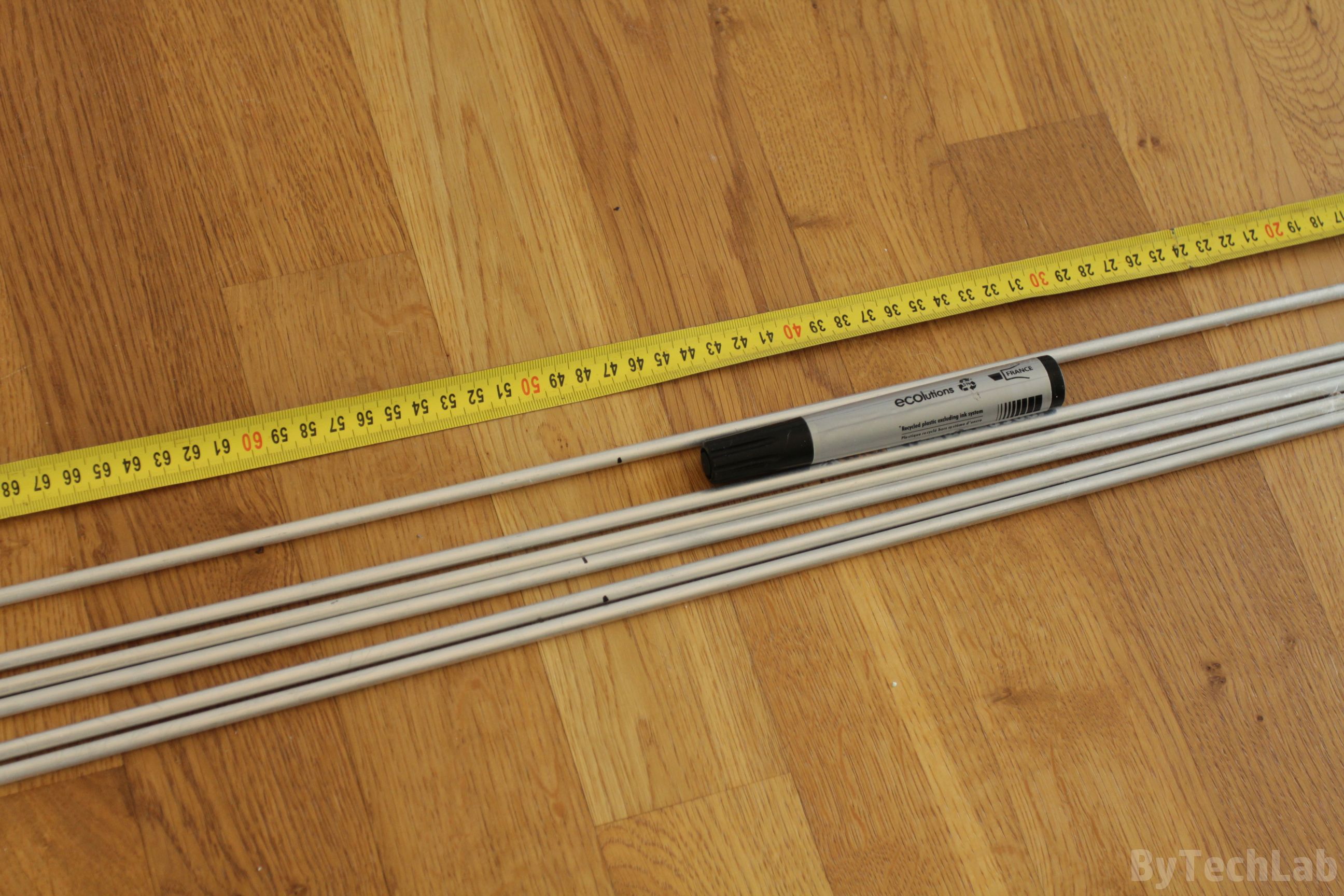

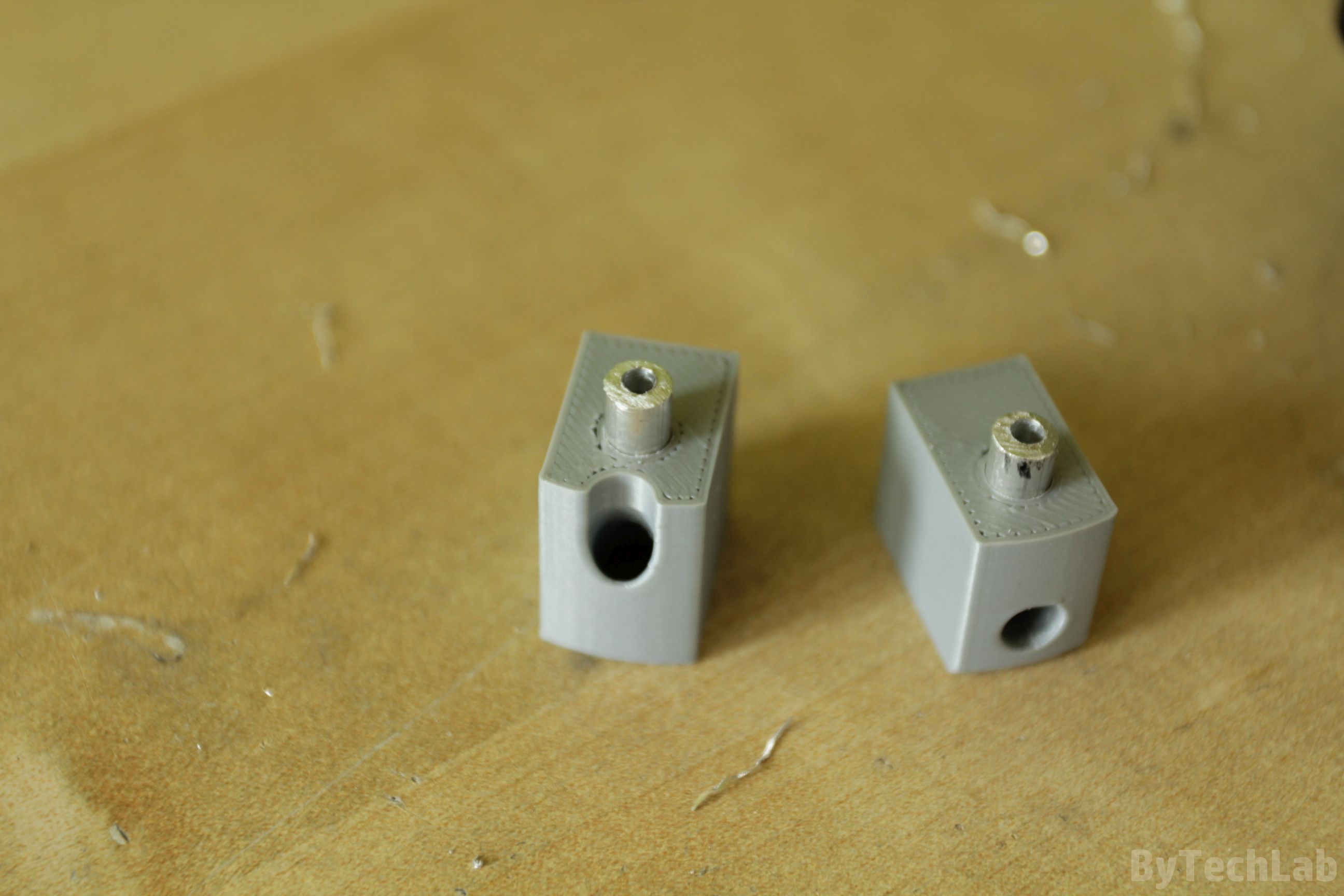
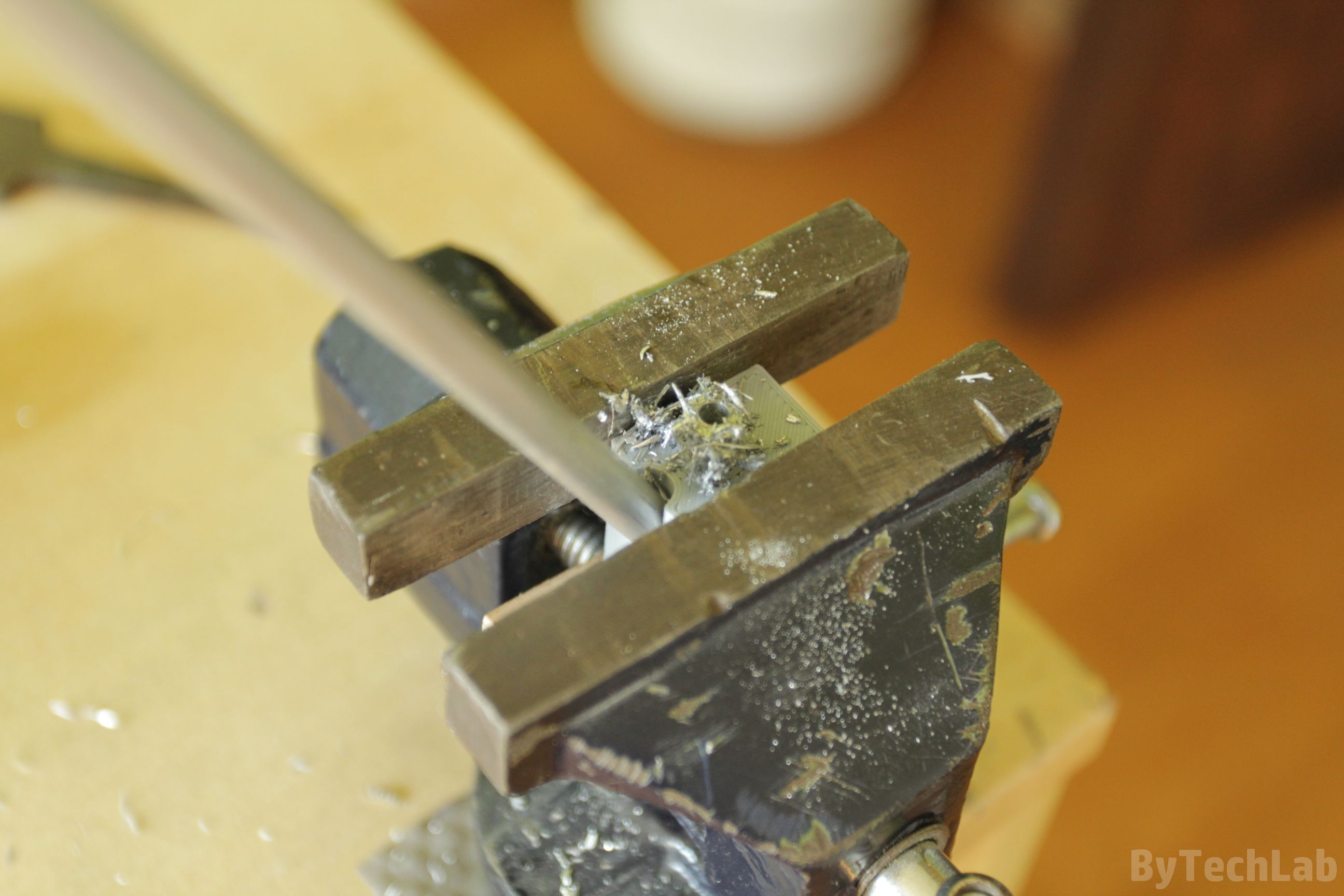
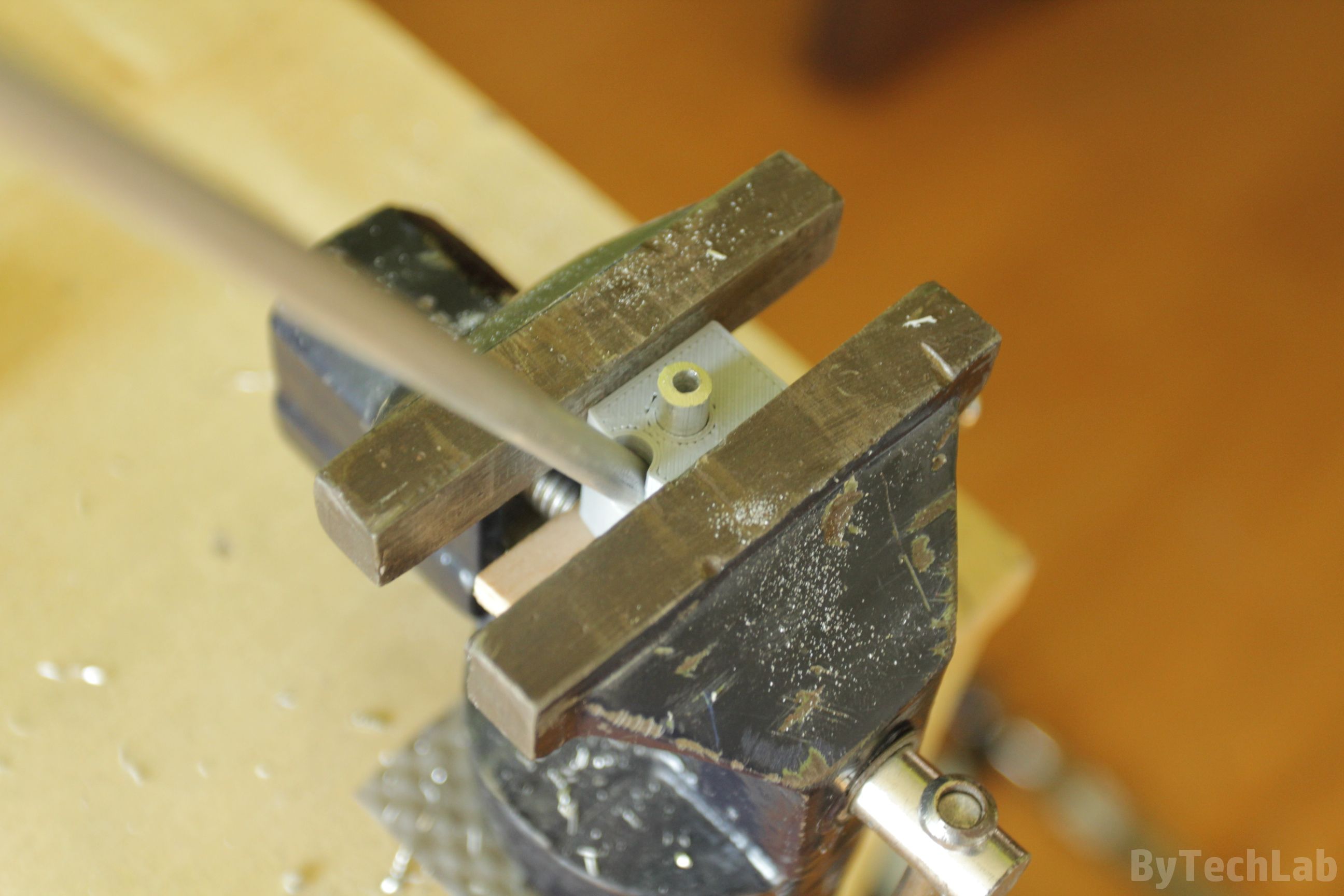
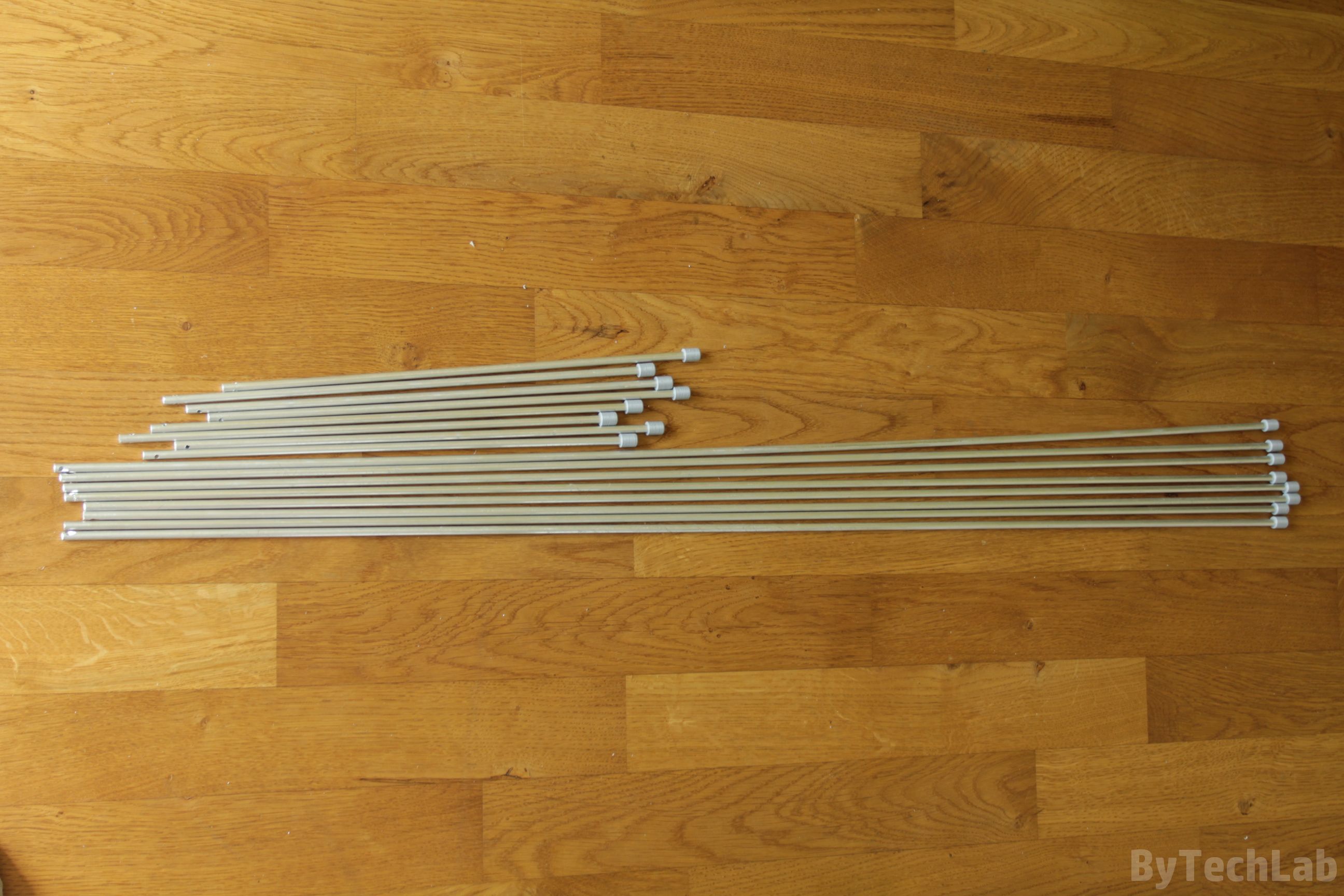
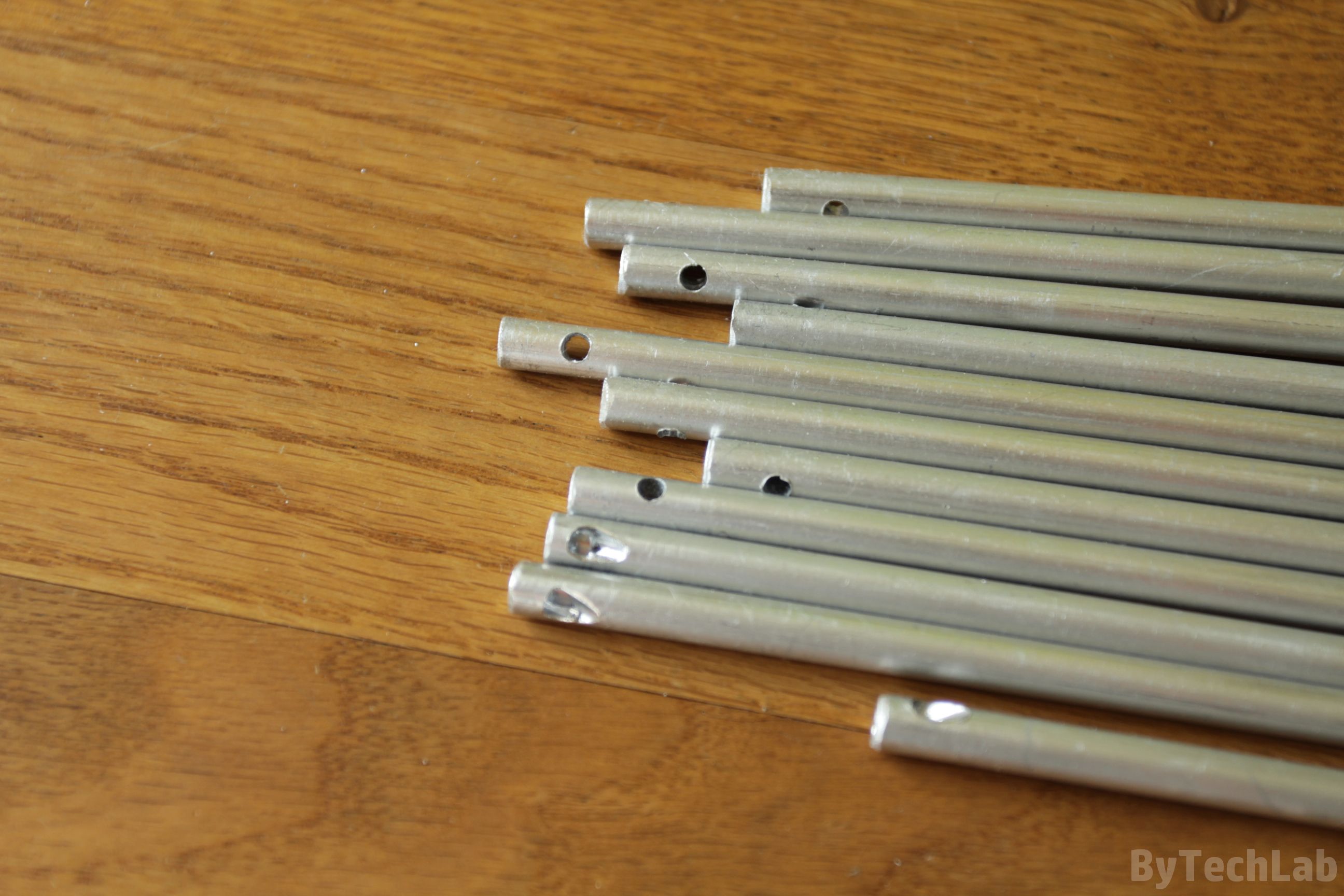
![Discone antenna - Cutting and drilling [copper plates/PCB,s]](https://bytechlab.com/content/uploads/2018/05/Discone-antenna-cutting-and-drilling-copper-plates.jpg)
![Discone antenna - Tinning [copper plates / PCB,s] with soldering iron](https://bytechlab.com/content/uploads/2018/05/Discone-antenna-tinning-copper-plates-with-soldering-iron-3.jpg)



